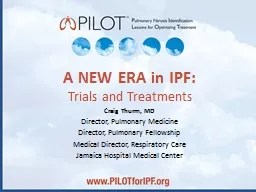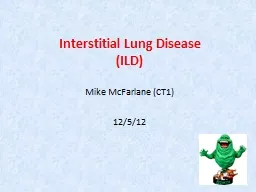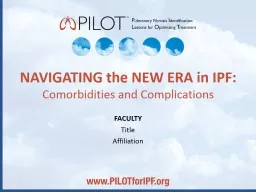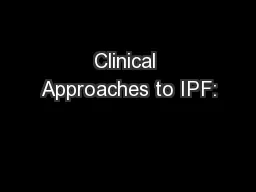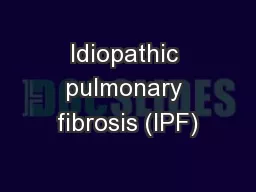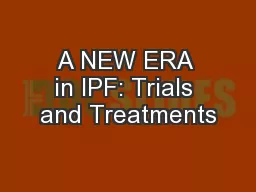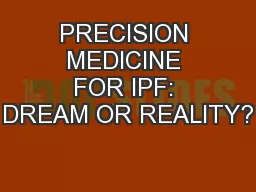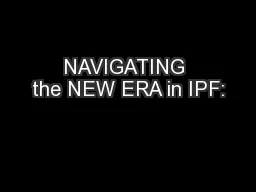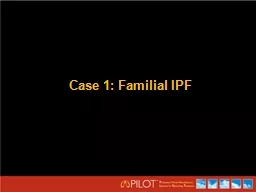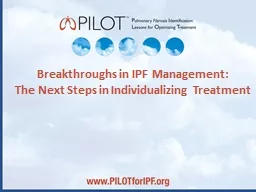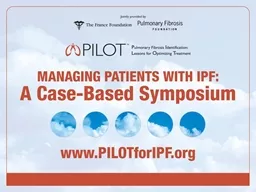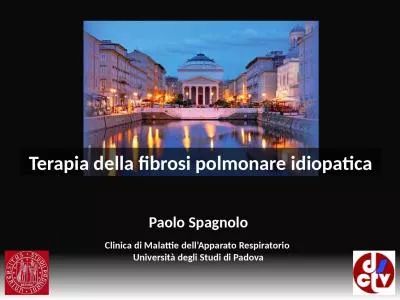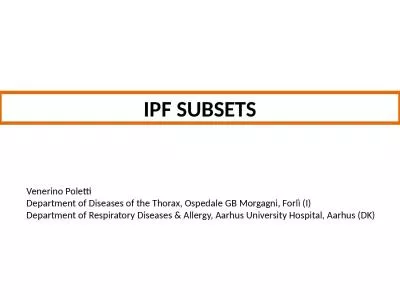PPT-A NEW ERA in IPF:
Author : pamella-moone | Published Date : 2016-05-09
Trials and Treatments Craig Thurm MD Director Pulmonary Medicine Director Pulmonary Fellowship Medical Director Respiratory Care Jamaica Hospital Medical Center
Presentation Embed Code
Download Presentation
Download Presentation The PPT/PDF document "A NEW ERA in IPF:" is the property of its rightful owner. Permission is granted to download and print the materials on this website for personal, non-commercial use only, and to display it on your personal computer provided you do not modify the materials and that you retain all copyright notices contained in the materials. By downloading content from our website, you accept the terms of this agreement.
A NEW ERA in IPF:: Transcript
Download Rules Of Document
"A NEW ERA in IPF:"The content belongs to its owner. You may download and print it for personal use, without modification, and keep all copyright notices. By downloading, you agree to these terms.
Related Documents

